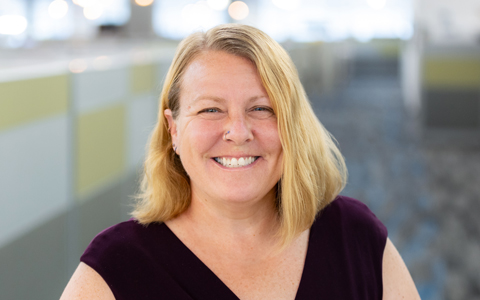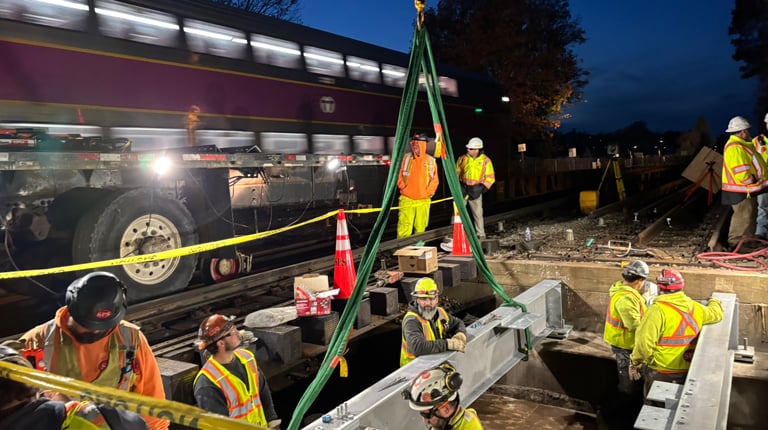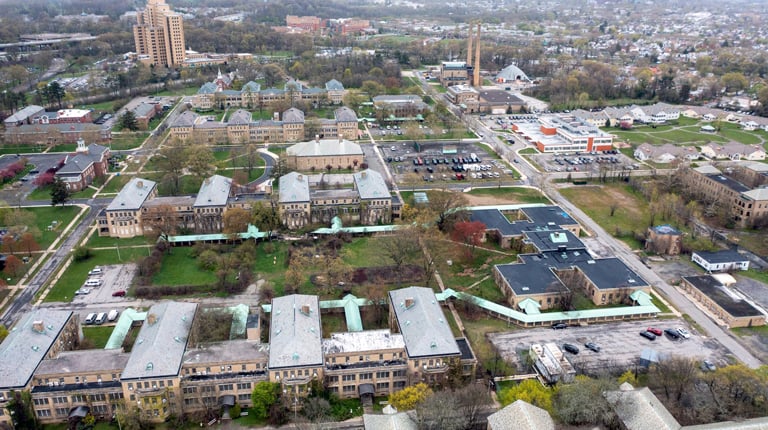
Holly Palmgren is a Senior Environmental Project Manager whose career spans three decades in construction for public transportation, including more than 20 years at the Massachusetts Bay Transportation Authority (MBTA). Her most recent role with MBTA was as Senior Project Manager for the South Coast Rail project. Given her extensive experience managing both environmental permitting and construction for major, complex transit and rail infrastructure projects, we asked Holly how she navigates project challenges and how her years on the owner’s side have helped inform her leadership style at VHB.
VHB: How does your experience working for MBTA shape your approach now that you’re a consultant?
Holly: I spent most of my career at MBTA, primarily as the Manager of Environmental Construction. From an owner’s perspective, my focus was providing project compliance with permits and regulations as well as maintaining the schedule. Knowing the importance to the agency of timing, compliance, and keeping service running, my focus at VHB is on providing strategic planning and coordination to deliver project success.
VHB: What’s one of the most important things you’ve learned about managing environmental permitting for large-scale transit projects?
Holly: These types of projects involve navigating a complex landscape of regulations, processes, and coordination among stakeholders and project partners. Having managed intricate permitting requirements such as those required by the United States Army Corps of Engineers, Massachusetts Department of Environmental Protection (MA DEP), and U.S. Coast Guard, the key is close collaboration with design and construction teams as well as the project owner to integrate environmental considerations into project planning and execution.
VHB: Any tips for developing and managing that level of collaboration?
Holly: I find that early outreach and coordination is critical in delivering a successful project. Stakeholders, especially regulatory and permitting agencies, need to be identified early on and brought to the table so that any issues can be discussed and resolved early during project development and permitting. On design-build projects in particular, this collaboration keeps the design and contractor team, owner, and regulators in alignment on the project elements and construction plans. Early efforts help to facilitate timely permits and reviews, reasonable schedules, and successful construction.
VHB: Maintaining passenger or freight service is often a critical component of transit and rail projects. How do you support that goal from an environmental planning perspective?
Holly: Maintaining service throughout these complex projects requires meticulous planning and coordination. I employ strategic phasing and scheduling to minimize disruptions, working closely with design and construction teams to prioritize safety and efficiency. Maintaining open lines of communication with all parties involved is essential for addressing potential issues proactively and making the project a success. The early collaboration approach that I implement on projects helps to identify ways to phase and streamline construction to accommodate operational continuity.
VHB: Can you discuss the role your professional relationships play?
Holly: Professional relationships are crucial in advancing infrastructure projects, as they not only facilitate trust and collaboration but also help streamline project timelines. Being able to get my call or email answered quickly or have a candid conversation about permitting challenges and alternatives is critical to keeping things on track. Throughout my career at MBTA, I built relationships across virtually every regulatory agency that touches transit and rail projects in Massachusetts.
VHB: Reflecting on your career, what has been the most rewarding aspect of your work in transit infrastructure?
Holly: The most rewarding aspect of my work in transit infrastructure has been the opportunity to contribute to projects that have a lasting impact on communities. Seeing a project like South Coast Rail come to fruition, knowing that it enhances connectivity and improves quality of life, is incredibly fulfilling.


